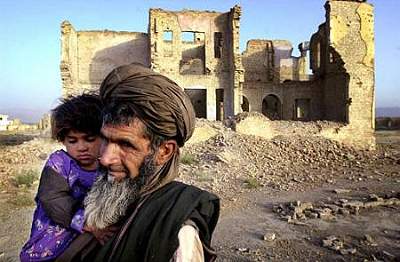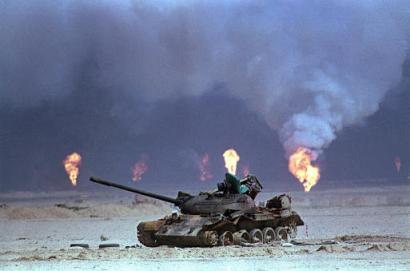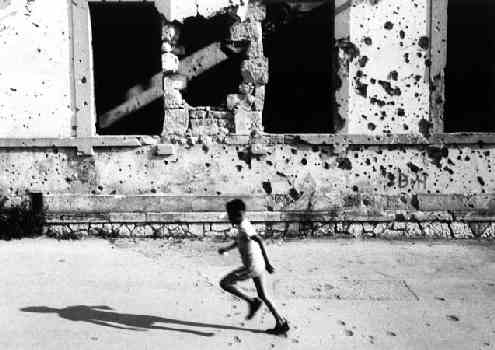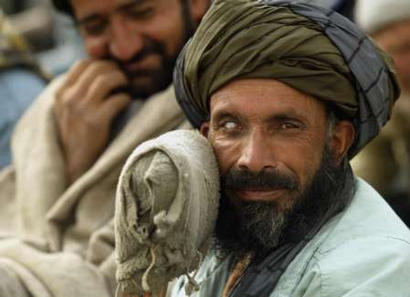| overview home page |
| peace, war & conflict |
| human rights |
| development & poverty |
| environment |


War & Conflict
Since the end of the Second World War in 1945 there have been over 250 major wars in which over 23 million people have been killed, tens of millions made homeless, and countless millions injured and bereaved.
In the history of warfare the twentieth century stands out as the bloodiest and most brutal - three times more people have been killed in wars in the last ninety years than in all the previous five hundred
War: An Overview, Peace Pledge Union
One year into the new millennium the world still wrestles with a welter of problems left over from the 20th century. There are still more than three dozen major active conflicts (those with over 1,000 casualties, both military and civilian) in the world.
Center for Defence Information, The Defence Monitor
In armed conflicts since 1945, 90 per cent of casualties have been civilians compared to 50 per cent in the Second World War and 10 per cent in the First.
New Internationalist - Issue 311 "Peace"
3 out of 4 fatalities of war are women and children.
UN World Food Programme, 1998.
War and internal conflicts in the 1990s forced 50 million people to flee their homes.
UNDP Human Development Report 2000

Children and War
Millions of children are caught up in conflicts in which they are not merely bystanders, but targets. Some fall victim to a general onslaught against civilians; others die as part of a calculated genocide. Still other children suffer the effects of sexual violence or the multiple deprivations of armed conflict that expose them to hunger or disease. Just as shocking, thousands of young people are cynically exploited as combatants.
In the past decade, around 2 million children have been killed in armed conflict, three times as many have been seriously injured or permanently disabled, and countless others have been forced to witness or even to take part in horrifying acts of violence.
Graca Michel, Impact of Armed Conflict on Children, UNICEF
In the wars of the last decade, more children were killed than soldiers. Child victims of war include an estimated 2 million killed, 4 to 5 million disabled, 12 million left homeless, and more than 1 million orphaned.
UNICEF, State of the World’s Children, 1995, p. 2.
Child Soldiers
In dozens of countries around the world, children have become direct participants in war. Denied a childhood and often subjected to horrific violence, some 300,000 children are serving as soldiers in current armed conflicts. These young combatants participate in all aspects of contemporary warfare. They wield AK-47s and M-16s on the front lines of combat, serve as human mine detectors, participate in suicide missions, carry supplies, and act as spies, messengers or lookouts. Child soldiers are being used in more than thirty countries around the world. Because of their immaturity and lack of experience, child soldiers suffer higher casualties than their adult counterparts.
Human Rights Watch
While most child soldiers are aged between 15 and 18, many are recruited from the age of 10 and sometimes even younger.
Coalition to Stop the Use of Child Soldiers

Women and War
During armed conflict, women and girls are continually threatened by rape, domestic violence, sexual exploitation, trafficking, sexual humiliation and mutilation. They are at heightened risk in all settings, whether at home, in flight or in camps for displaced people.
UNIFEM, Women, Peace & Security
Small Arms & Light Weapons
More than 500 million small arms and light weapons are in circulation around the world – one for about every 12 people. They were the weapons of choice in 46 out of 49 major conflicts since 1990, causing four million deaths – about 90 per cent of them civilians, and 80 per cent women and children.
Human security is under increasing threat from the spread of small arms and light weapons and their illegal trade. They have devastated many societies and caused incalculable human suffering. They continue to pose an enormous humanitarian challenge, particularly in internal conflicts where insurgent militias fight against government forces. In these conflicts, a high proportion of the casualties are civilians who are the deliberate targets of violence — a gross violation of international humanitarian law. This has led to millions of deaths and injuries, the displacement of populations, and suffering and insecurity around the world.
UN Conference Brochure - Illicit trade in Small Arms, 2001
Nuclear Weapons
The threat of nuclear weapons has been a fact of life on earth for more than half of the 20th century. The size of nuclear arsenals worldwide peaked in the 1980s and remains at approximately 30,000 warheads today, including strategic and tactical weapons. The sophistication of the science and the political dependence on the doctrine of deterrence -- the threat of "mutually assured destruction" as a strategy for security -- have both increased steadily since 1945.
Despite the end of the Cold War, some 5,000 nuclear weapons are on hair-trigger alert, ready to be launched on a few minutes notice.
A typical modern 150-kiloton hydrogen bomb could cause somewhere between 736,000 and 8,660,000 deaths, depending on the population density of the target city.
International Physicians for the Prevention of Nuclear War
Nuclear Spending
Since 1940, the United States has spent almost $5.5 trillion on nuclear weapons and weapons-related programs. The amount spent through 1996 is 29 percent of all military spending from 1940 through 1996. This figure exceeds all other categories of government spending except nonnuclear national defense and social security.
Stephen Schwarz, Brookings Institution, Atomic Audit: 1940-1996.
Nuclear Testing
Since 1945, there have been 2,046 tests worldwide, about one nuclear test every nine days for the last fifty-one years. Wherever nuclear weapons testing has occurred for whatever reasons there have been environmental problems. Radioactivity has leaked into the environment from underground nuclear tests, large areas of land are uninhabitable as a result of atmospheric and underground nuclear testing, and indigenous people, their children and their children's children's health and livelihoods have been affected by nuclear weapons tests.
Greenpeace
Military Spending
Current global military spending has reached $781 billion annually; more than the total income of the poorest 45% of the global population.
United Nations Children's Fund (UNICEF) Report, The State of the World's Children, 1999. World Bank, World Development Indicators, 1998.
49% of all federal tax revenues go towards current or past military costs.
Budget of the United States Government, Fiscal Year 1999.

Landmines
The global landmine crisis is one of the most pervasive problems facing the world today. It is estimated that there are between 60 and 70 million landmines in the ground in at least 70 countries. Landmines maim or kill approximately 26,000 civilians every year, including 8,000 to 10,000 children. Those victims that survive endure a lifetime of physical, psychological, and economic hardship. At least 75% of landmine victims are civilians.
Adopt-a-Minefield (www.landmines.org)